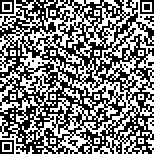| 引用本文: |
李雅云,李艳,朱关保,吴正治,谢梦洲.基于代谢组学技术探讨除湿化浊降酸方对高尿酸血症小鼠的降尿酸作用机制[J].湖南中医药大学学报,2023,43(6):1006-1013[点击复制] |
|
| |
|
|
| 本文已被:浏览 1962次 下载 1364次 |
| 基于代谢组学技术探讨除湿化浊降酸方对高尿酸血症小鼠的降尿酸作用机制 |
| 李雅云,李艳,朱关保,吴正治,谢梦洲 |
| (湖南中医药大学, 湖南 长沙 410208;湖南中医药大学中医诊断学湖南省重点实验室, 湖南 长沙 410208;深圳大学第一附属医院, 广东 深圳 518035) |
| 摘要: |
| 目的 基于代谢组学技术探讨除湿化浊降酸方对高尿酸血症(hyperuricemia, HUA)小鼠的降尿酸作用机制。方法 将32只雄性昆明小鼠随机分为正常组、模型组、除湿化浊降酸方组(中药组)、别嘌呤醇组,每组8只。除正常组外,其余各组小鼠每日喂食15%酵母粉添加饲料复制HUA模型,持续9周。在造模同时,除湿化浊降酸方组每日给予除湿化浊降酸方水提液28.05 g/kg灌胃,别嘌呤醇组每日以别嘌呤醇5 mg/kg灌胃。9周后取材,计算小鼠肝脏指数和肾脏指数,检测血尿酸(serum uric acid, SUA)、血尿素氮(blood urea nitrogen, BUN)、血肌酐(serum creatinine, SCr)水平,测定肝脏组织黄嘌呤氧化酶(Xanthine Oxidase, XOD) 活性,采用HE染色法观察小鼠肾脏组织病理变化,采用非靶向代谢组学技术分析HUA小鼠血清代谢谱,结合多元统计学方法筛选差异代谢物,通过KEGG富集分析获得差异代谢通路。结果 与正常组比较,模型组SUA、BUN、SCr指标均有显著升高(P<0.01),模型组小鼠肾脏组织可见少量肾小管上皮细胞水样变性,胞质疏松淡染。与模型组比较,中药组SUA、BUN、SCr指标均有显著降低(P<0.01),别嘌呤醇组SUA、SCr指标降低(P<0.05)。与模型组比较,中药组抑制XOD活性效果显著(P<0.01),中药组、别嘌呤醇组小鼠肾脏组织损伤均有不同程度改善。利用非靶向代谢组学技术进行分析,模型组与正常组之间筛选出48种HUA差异代谢物,中药组治疗后部分代谢物趋势出现逆转。通过将筛选出的差异代谢物进行富集通路分析发现与甘油磷脂、谷胱甘肽等代谢通路相关。结论 除湿化浊降酸方降尿酸作用可能与其抑制XOD 活性有关,治疗HUA作用可能与甘油磷脂、谷胱甘肽代谢通路有关。 |
| 关键词: 除湿化浊降酸方|高尿酸血症|代谢组学|甘油磷脂|谷胱甘肽 |
| DOI:10.3969/j.issn.1674-070X.2023.06.007 |
| 投稿时间:2023-05-14 |
| 基金项目:国家科技部重大新药创制项目(2017ZX09301001);湖南省重点研发计划(2021—2022年)项目(第二批)(2022SK2018);深圳市科创委基础研究(面上项目)(JCYJ20220530150408018)。 |
|
| Mechanism of action of Chushi Huazhuo Jiangsuan Formula on uric acid-lowering in hyperuricemic mice based on metabolomics |
| LI Yayun,LI Yan,ZHU Guanbao,WU Zhengzhi,XIE Mengzhou |
| (Hunan University of Chinese Medicine, Changsha, Hunan 410208, China;Provincial Key Laboratory of TCM Diagnostics, Hunan University of Chinese Medicine, Changsha, Hunan 410208, China;The First Hospital of Shenzhen University, Shenzhen, Guangdong 518035, China) |
| Abstract: |
| Objective To explore the mechanism of action of Chushi Huazhuo Jiangsuan Formula on uric acid-lowering in hyperuricemic mice based on metabolomics. Methods The total of 32 male Kunming mice were randomly divided into normal group, model group, Chushi Huazhuo Jiangsuan Formula group (Chinese medicine group) and allopurinol group, with 8 mice in each group. Except normal group, the mice in other groups were fed with 15% yeast powder daily for 9 weeks to establish the HUA model. At the same time of modeling, Chinese medicine group was given 28.05 g/kg of water extract of Chushi Huazhuo Jiangsuan Formula by gastric irrigation and allopurinol group was given 5 mg/kg of allopurinol by gastric irrigation daily. The samples were taken after 9 weeks, the liver index and kidney index of mice were calculated, the levels of serum uric acid (SUA), blood urea nitrogen (BUN) and serum creatinine (SCr) were measured, and the activity of xanthine oxidase (XOD) in liver tissue was determined. HE staining was used to observe the pathological changes of kidney tissue in mice, non-targeted metabolomics technology was used to analyze the serum metabolic spectrum of HUA mice, multivariate statistical method was combined to screen differential metabolites, and KEGG enrichment analysis was performed to obtain differential metabolic pathways. Results Compared with normal group, the indexes of SUA, BUN, and SCr in model group were significantly higher (P<0.01), and watery degeneration in a small amount of renal tubular epithelial cells and loose and pale cytoplasm were observed in the mice kidney tissues of model group. Compared with model group, the indexes of SUA, BUN and SCr in Chinese medicine group were significantly lower (P<0.01), and the indexes of SUA and Scr in allopurinol group were lower (P<0.05). Compared with model group, Chinese medicine group had a significant effect on inhibiting XOD activity (P<0.01) and the kidney tissue damages of mice in Chinese medicine group and allopurinol group were improved at different degree. Non-targeted metabolomics was used for analysis, the total of 48 kinds of HUA differential metabolites were screened between model group and normal group and the trend of some metabolites in Chinese medicine group reversed after treatment. Through the enrichment pathway analysis of the screened differential metabolites, it was found that they were related to the metabolic pathways such as glycerophospholipid and glutathione. Conclusion The effects of Chushi Huazhuo Jiangsuan Formula on uric acid-lowering may be related to its inhibition of XOD activity, and its therapeutic effects on hyperuricemia may be related to the metabolic pathways of glycerophospholipid and glutathione. |
| Key words: Chushi Huazhuo Jiangsuan Formula|hyperuricemia|metabolomics|glycerophospholipid|glutathione |
|

二维码(扫一下试试看!) |
|
|
|
|




